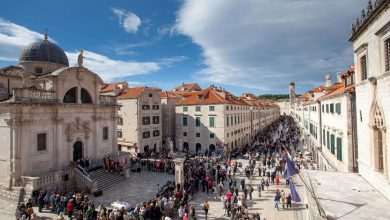It is mid-February, which means it is time to start thinking about the upcoming tourist season. Dubrovnik Mayor Mato Franković believes it will begin in mid-June, adapted to our everyday ‘new normal’. According to the Mayor, the entire marketing plan has been developed and will be presented by the Tourist Board very soon targeting mostly our most faithful markets, The United Kingdom, and the United States, but also Poland which proved its immense potential last year.
“Advertising on the domestic market is also a must,” he says, “considering a reasonable number of domestic visits to Dubrovnik due to our active campaign.”
The Mayor expects the European Union to adopt a single travel rule within the EU and the United Kingdom hoping that recovery and attracting guests would be easier having clear parameters in mind. “It is crucial to get the parameters according to which we will be able to work,“ Mayor Franković stressed. If obtained by mid-March, he is confident the season will start in mid-June and do well throughout July, August, September, and October. The Mayor believes a significant part of the European and British population should be vaccinated by mid-June. “Having in mind that a significant part of people will be able to travel we are in favour of the introduction of the COVID passport at the level of the European Union, in that way reducing testing issues,” he said.
He also revealed that they are waiting on the ‘green light’ from the Civil Protection Headquarters of the Republic of Croatia to start testing guests coming to Dubrovnik via plane. “We started an initiative with the National Headquarters in which we requested that Dubrovnik Airport be allowed to perform PCR testing of passengers, or LAMP testing as the United Kingdom does. This would enable the provision of faster service to all our visitors,” the Mayor pointed out.
“We need to get the most out of the upcoming tourist season, but we cannot look at it as a recovery, but as adaptation to these new circumstances,” he concludes.



